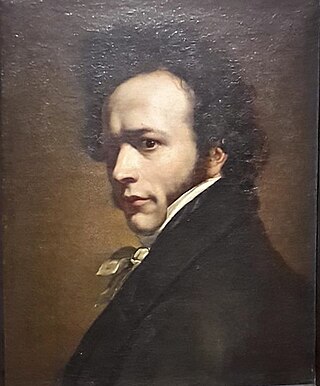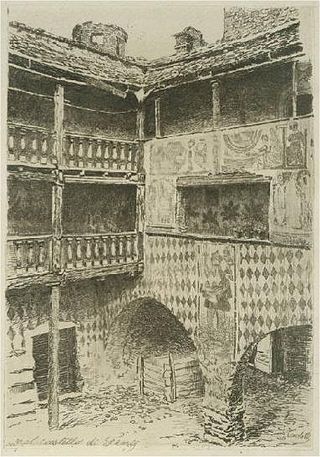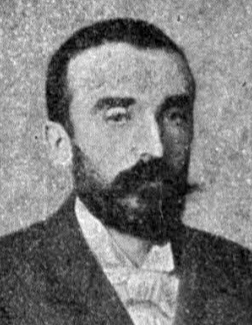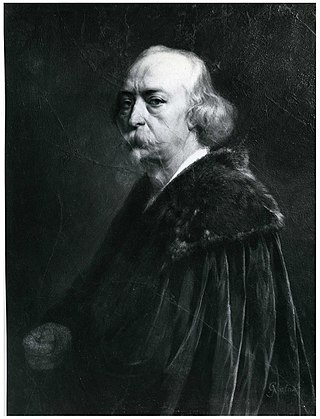
Andrea Tavernier (Turin, December 23, 1858 - Grottaferrata, 1932) was an Italian painter, mainly of landscapes and urban vedute.

Andrea Tavernier (Turin, December 23, 1858 - Grottaferrata, 1932) was an Italian painter, mainly of landscapes and urban vedute.
He was a pupil of Andrea Gastaldi at the Accademia Albertina of Turin. He exhibited landscape Aurea Primaverili at the 1884 Promotrice of Turin. In 1888 at the same Promotrice, he exhibited Contrasti, reproduced in engraving for the catalogue by Carlo Chessa. [1] He traveled to Rome and along the Adriatic coast to find subjects for his paintings. He frequently exhibited at the Venice Biennale. The Biennale of 1922 displayed 36 of his works. [2] [3]
Cesare Ferro Milone, sometimes known only as Cesare Ferro, was an Italian painter born in Turin.

Giovanni Fattori was an Italian artist, one of the leaders of the group known as the Macchiaioli. He was initially a painter of historical themes and military subjects. In his middle years, inspired by the Barbizon school, he became one of the leading Italian plein-airists, painting landscapes, rural scenes, and scenes of military life. After 1884, he devoted much energy to etching.

Giovanni Battista Biscarra or Jean-Baptiste Biscarra was an Italian painter, sculptor and lithographer. He principally painted historical and religious subjects and royal portraits.

Francesco Menzio was an Italian painter.
Antonietta Brandeis (1848–1926), was a Czech-born Italian landscape, genre and portrait painter, as well as a painter of religious subjects for altarpieces.

Michele Cascella was an Italian artist. Primarily known for his oil paintings and watercolours, he also worked in ceramics, lithography, and textiles. He exhibited regularly at the Venice Biennale from 1924 until 1942, and his works are owned by major museums in Italy and Europe, including Victoria and Albert Museum in London, Galerie nationale du Jeu de Paume in Paris, and Galleria Nazionale d'Arte Moderna in Rome.

Giacomo Gandi was an Italian painter noted for genre painting.

Giacomo Grosso was an Italian painter.

Francesco Sartorelli was an Italian painter.
Giuseppe Lavini was an Italian painter and art critic.
Camillo Cabutti or Camillo Filippo Cabutti (1863–1922) was an Italian painter, mainly of landscapes in an impressionist style.
Riccardo Pasquini was an Italian painter.

Celestino Turletti (1845–1904) was an Italian painter and engraver.
Antonio Tortone was an Italian sculptor.

Ernesto Serra was an Italian genre, landscape and portrait painter from Varallo Sesia, Province of Vercelli in the Piemonte Region.

Llewelyn Lloyd was a British-Italian painter, belonging to the Post-Macchiaioli movement.

Andrea Gastaldi was an Italian painter, primarily of historical canvases and portraits.
Giovanni Bartolena was an Italian painter, mainly of landscapes, but also of landscapes with animals.
Giuseppe Riccardo "Beppe" Devalle was an Italian painter and collagist, acknowledged as one of the most interesting and highly appreciated artists of the last few decades of Italian painting. He always refuted the prevailing trends of the day so as to create and distinguish his own individual style: this may explain why Devalle has often been overlooked and placed as something of an outsider. He has been known as a master of photomontage and defined as a creator of the 'New Epic Italian style'.

Gisella Giovenco is an Italian painter, stylist and publicist.